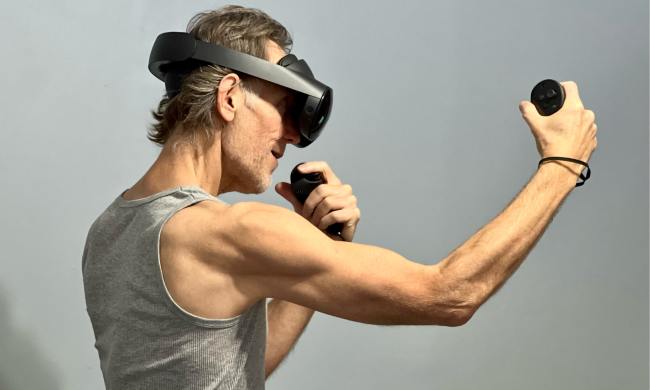VR headsets are currently able to simulate realistic environments to trick your brain into thinking it’s actually there. But researchers at the University of Chicago are going a step further by simulating physical sensations using chemicals applied to your skin.
The implementation seems basic, but the results are fascinating and could provide a way to make VR even more immersive.

This innovative method, dubbed “chemical haptics,” involves triggering various stimuli on the skin using different chemicals. The chemicals are delivered using a special system of wearable patches and pumps that can be worn anywhere on the body. As long as direct skin contact is possible, the patches will work — including on the face. The studies claim that the chemicals themselves are safe for humans.
There are five different chemicals to simulate five different physical sensations. Menthol is used to create a sensation of coolness, such as walking outside on a cold day. Lidocaine, often used as a local anesthetic, can be used to simulate a numbing sensation on the skin. Capsaicin, the chemical behind your favorite spicy food, is used to create heat or a sense of warmth. Sanshool creates a tingling sensation on the skin, while cinnamaldehyde simulates a stinging sensation, and is potentially useful to teach negative feedback.
The researchers created a video to show how each of the sensations could be used. They made a rudimentary VR game in which the player walks through different environments and has a virtual armband that allows them to interact with their surroundings.
For example, when the virtual armband starts short-circuiting, the chemical patches release sanshool to simulate being shocked. The player also walks through different environments to simulate heat or cold.
So, why does all this matter? Well, there’s been a renewed interest in both VR and how that could be applied in recent weeks. Facebook recently changed its name to Meta to signal its focus on creating the metaverse, an evolution of the internet that sees social interaction not just on a screen, but in fully realized 3D virtual worlds.
In the novel Ready Player One, there were advanced haptic suits that provided realistic sensations of different textures and surfaces while logged into a virtual world called the OASIS. This research could be a steppingstone to those kinds of suits if the metaverse does ever materialize.



